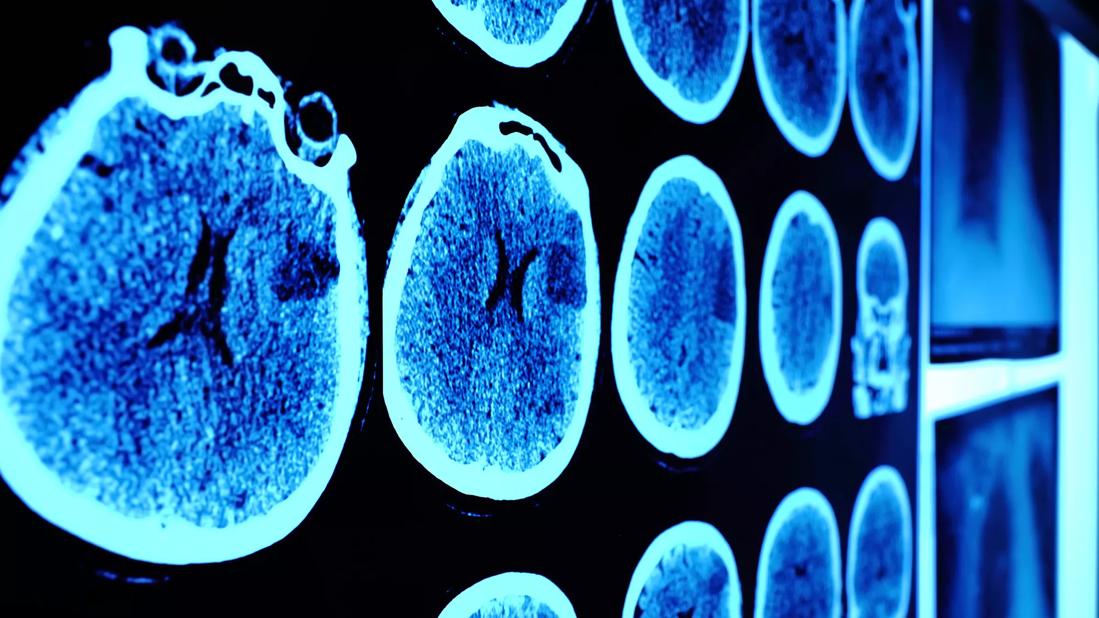BACE1 inhibitor reduces cancer progression in models of glioblastoma

New preclinical research from Cleveland Clinic investigators offers hope that drugs originally designed to help treat Alzheimer’s disease may hold promise for glioblastoma, the most common and lethal type of primary brain tumor. The findings were published in Nature Cancer (2, 1136-1151 [2021]).
Advertisement
Cleveland Clinic is a non-profit academic medical center. Advertising on our site helps support our mission. We do not endorse non-Cleveland Clinic products or services. Policy
Members of the BACE1 inhibitor drug class were once among the most anticipated candidates for treating Alzheimer’s disease. They act by inhibiting the BACE1 protein, which is responsible for producing the β-amyloid plaques in the brain that are a main hallmark of Alzheimer’s disease. After BACE1 inhibitors demonstrated poor efficacy in clinical trials, however, research interest in their use against Alzheimer’s subsided.
Interestingly, BACE1 is also expressed on a class of immune cells — tumor-associated macrophages (TAMs) — that are found in the tumor microenvironment, or the non-cancer cell components of solid tumors. TAMs are particularly abundant in glioblastoma, prompting the Cleveland Clinic research team, led by Shideng Bao, PhD, to wonder whether BACE1 inhibitors may be effective in treating or preventing this highly aggressive brain tumor.
“There are two main types of TAMs,” explains Dr. Bao, Director of the Center for Cancer Stem Cell Research in Cleveland Clinic Lerner Research Institute. “Most TAMs are tumor-promoting and contribute to treatment resistance, but there are some that are tumor-suppressing. If we can develop a therapeutic that manipulates this balance — tipping the scales so that there are more tumor-suppressing TAMs — perhaps we can better treat glioblastoma.”
In their newly published study, the researchers screened a wide range of compounds to identify the most promising candidates against tumor-promoting macrophages (pTAMs), revealing a BACE1 inhibitor known as MK-8931 (verubecestat).
Advertisement
They found that treating human-derived preclinical models of glioblastoma with verubecestat reprogrammed pTAMs into tumor-suppressing macrophages (sTAMs). As a result, the more abundant sTAMs helped destroy tumor cells, including the particularly aggressive glioma stem cells that can self-renew and repopulate a tumor.
“We found that these changes significantly reduced tumor growth,” says Dr. Bao. “The benefits were even more pronounced when verubecestat was administered in combination with low-dose radiation, since that enhances TAM infiltration into the tumor.”
More research will be necessary, but Dr. Bao’s work so far suggests that verubecestat’s ability to transform pTAMs into sTAMs may be related to the activity of three molecules, including interleukin 6 (IL-6) and its receptor sIL-6R, as well as STAT3 (signal transducer and activator of transcription 3). These molecules, together with BACE1 — which is more abundantly expressed on pTAMs than on sTAMs — form a signaling cascade that ultimately helps maintain the pro-cancer properties of pTAMs. Inhibiting BACE1, as with verubecestat, interrupts this signaling pathway.
“Verubecestat has already been approved for use in humans because of its prior testing for Alzheimer’s disease,” notes Dr. Bao, “which would help speed the translation of our promising preclinical findings. This is a major benefit of drug repurposing — being able to bridge the gap from preclinical research to clinical testing, which can often be a lengthy process.”
Advertisement
The published research was supported in part by the National Institute of Neurological Disorders and Stroke.
Advertisement
Advertisement

First full characterization of kidney microbiome unlocks potential to prevent kidney stones

Researchers identify potential path to retaining chemo sensitivity

Large-scale joint study links elevated TMAO blood levels and chronic kidney disease risk over time

Investigators are developing a deep learning model to predict health outcomes in ICUs.

Preclinical work promises large-scale data with minimal bias to inform development of clinical tests

Cleveland Clinic researchers pursue answers on basic science and clinical fronts

Study suggests sex-specific pathways show potential for sex-specific therapeutic approaches

Cleveland Clinic launches Quantum Innovation Catalyzer Program to help start-up companies access advanced research technology